Graduate Texts in Mathematics 42·
Editorial Board
S. Axler F.W. Gehring K.A. Ribet
Springer
New York
Berlin
Heidelberg
Barcelona
Hong Kong
London
Milan
Paris
Singapore
Tokyo
�
Graduate Texts in Mathematics
T AKEUTIIZARING. Introduction to
Axiomatic Set Theory. 2nd ed.
2 OXTOBY. Measure and Category. 2nd ed.
3
SCHAEFER. Topological Vector Spaces.
2nd ed.
4 HIL TON/ST AMMBACH. A Course in
Homological Algebra. 2nd cd.
5 MAC LANE. Categories for the Working
Mathematician. 2nd ed.
SERRE. A Course in Arithmetic.
6 HUGHEsiPIPER. Projective Planes.
7
8 T AKEUTIIZARING. Akiomatic Set Theory.
9 HUMPHREYS. Introduction to Lie Algebras
and Representation Theory.
10 COHEN. A Course in Simple Homotopy
Theory.
11 CONWAY. Functions of One Complex
Variable I. 2nd ed.
> 12 BEALS. Advanced Mathematical Analysis.
13 ANDERSON/FULLER. Rings and Categories
35 ALEXANDERIWERMER. Several Complex
Variables and Banach Algebras. 3rd ed.
36 KELLEy/NAMIOKA et al. Linear
Topological Spaces.
37 MONK. Mathematical Logic.
38 GRAUERTIFRITZSCHE. Several Complex
Variables.
39 ARVESON. An Invi~tion to C·-Algebras.
40 KEMENY ISNELIlKNAPP. Denumerable
Markov Chains. 2nd ed.
41 APOSTOL. Modular Functions and Dirichlet
Series in Number Theory.
2nd ed.
42 SERRE. Linear Representations of Finite
Groups.
43 GILLMANlJERlSON. Rings of Continuous
Functions.
44 KENDIG. Elementary Algebraic Geometry.
45 LOEVE. Probability Theory I. 4th ed.
46 LOEVE. Probability Theory II. 4th ed.
47 MOISE. Geometric Topology in
Dimensions 2 and 3.
48 SACHSlWu. General Relativity for
Mathematicians.
49 GRUENBERGlWEIR. Linear Geometry.
2nd ed.
50 Eow ARDS. Fermat's Last Theorem.
51 KLINGENBERG. A Course in Differential
Geometry.
52 HARTSHORNE. Algebraic Geometry.
53 MANIN. A Course in Mathematical Logic.
54 GRA VERlW ATKINS. Combinatorics with
Emphasis on the Theory of Graphs.
55 BROWNIPEARCY. Introduction to Operator
Theory I: Elements of Functional
Analysis.
56 MASSEY. Algebraic Topology: An
Introduction.
57 CRowELLIF'OX. Introduction to Knot
Theory.
58 KOBLITZ. p-adic Numbers, p-adic Analysis,
and Zeta-Functions. 2nd ed.
59 LANG. Cyclotomic Fields.
60 ARNOLD. Mathematical Methods in
Classical Mechanics. 2nd ed.
61 WHITEHEAD. Elements of Homotopy
Theory.
62 KARGAPOLovIMERLZJAKOV. Fundamentals
of the Theory of Groups.
63 BOLLOBAS. Graph Theory.
64 EDWARDS. Fourier Series. Vol. 1. 2nd ed.
65 WELLS. Differential Analysis on Complex
Manifolds. 2nd ed.
(continued after index)
of Modules. 2nd ed.
14 GOLUBITSKV/GUILLEMIN. Stable Mappings
and Their Singularities.
IS BERBERIAN. Lectures in Functional
Analysis and Operator Theory.
16 WINTER. The Structure of Fields.
t7 ROSENBLA'IT. Random Processes. 2nd ed.
18 HALMOS. MeasUre Theory.
19 HALMOS. A Hilbert Space Problem Book.
2nd ed.
20 HUSEMOLLER. Fibre Bundles. Jrd ed.
21 HUMPHREYS. Linear Algebraic Groups.
22 BARNEslMACK. An Algebraic Introduction
to Mathematical Logic.
23 GREUB. Linear Algebra. 4th ed.
24 HOLMES. Geometric Functional Analysis
and Its Applications~
25 HEWITT/STROMBERG. Real and Abstract
Analysis.
26 MANES. Algebraic Theories.
27 KELLEY. General Topology.
28 ZARlSKllSAMUEL. Commutative Algebra.
Vol.l.
29 ZARlSKIISAMUEL. Commutative Algebra.
30
31
32
Vol.II.
JACOBSON. Lectures in Abstract Algebra I.
Basic Concepts.
JACOBSON. Lectures in Abstract Algebra II.
Linear Algebra.
JACOBSON. Lectures in Abstract Algebra
III. Theory of FieJds and Galois Theory.
33 HIRSCH. Differential Topology.
34 SPITZER. Principles of Random Walk.
2nd ed.
�
Jean-Pierre Serre
Linear· Representations
of Finite Groups
Translated from the French by
Leonard L . Scott
Springer
�
Jean-Pierre Serre
College de France
75231 Paris Cedex 05
France
Editorial Boord
S. Axler
Mathematics Department
San Francisco State
University
San Francisco, CA 94132
USA
Leonard L. Scott
University of Virginia
Department of Mathematics
Charlottesville, Virginia 22?03
USA
.. F.W. Gehring
Mathematics Department
East Hall
University of Michigan
Ann Arbor, MI 48109
USA
K.A. Ribet
Mathematics Department
University of California
at Berke1ey
Berkeley, CA 94720-3840
USA
Mathematics Subject Classification: 20Cxx
Library of Congress Cataloging in Publication Data
Serre, Jean .. Pierre.
Linear representations of finite groups.
(GradUJte texts in mathematics ; 42)
Translation of Representations lineaires des
groupes finis, 2. ed.
Includes bibliographies and indexes.
J. Representations of groups. 2. Finite
groups.
QA17J.SS313
I. Title.
II. Series.
512'.2
76·11585
Translation of the French edition
Repr~senlal;ons linla;res des groupes finis, Paris: Hennann 1971
© 1977 by Springer .. Veriag New York, Inc.
All rights reserved. This work may not be translated or copied in whole or in part without the writ ..
ten pennission of the publisher (Springer .. VerJag New York, Inc., 175 Fifth Avenue, New York, NY
10010; USA), except for brief excerpts in connection with reviews or scholarly analysis. Use in con ..
nection with any form of information .storage and retrieval, electronic adaptation, computer soft
ware, or by similar or dissimilar methodology now known or hereafter developed is forbidden.
The use of general descriptive names, trade names, trademarks, etc., in this publication, even. if the
former are Dot especially identified, is not to be taken as a sign that such names, as understood by
the Trade Marks and Merchandise Marks Act, may accordingly be used freely by anyone.
The reprint has been authorized by Springer-Verlag (BerlinlHeidelberglNew York) for sale in
the People's Republic of China only and not for export therefrom
ISBN 0-387-90 190-6
ISBN 3-540 .. 90 190-6
SPIN 10834786
Springer-Verlag New York Berlin Heidelberg
A member of BertelsmannSpringer Science+Business Media GmbH
�
Preface
This book consists of three parts, rather different in level and purpose:
The first part was originally written for quantum chemists. It describes the
correspondence, due to Frobenius, between linear representations and charac
ters. This is a fundamental result, of constant use in mathematics as well as in
quantum chemistry or physics. I have tried to give proofs as elementary as
possible, using only the definition of a group and the rudiments of linear algebra.
The examples (Chapter 5) have been chosen from those useful to chemists.
The second part is a course given in 1966 to second-year students of I'Ecole
Nonnale. It completes the first on the following points:
(a) degrees of representations and integrality properties of characters (Chapter 6);
(b) induced representations, theorems of Artin and Brauer, and applications
(Chapters 7-1 J);
(c) rationality questions (Chapters] 2 and ) 3).
The methods used are those of linear algebra (in a wider sense than in the first
part): group algebras, modules, noncommutative tensor products, semisimple
algebras.
The third part is an introduction to Brauer theory: passage from characteristic 0
to characteristic p (and conversely). I have freely used the language of abelian
categories (projective modules, Grothendieck groups), which is well suited to
this sort of question. The principal results are:
(a) The fact that the decomposition homomorphism is surjective: all irreducible
representations in characteristic p can be lifted "virtually" (i.e., in a suitable
Grothendieck group) to characteristic o.
(b) The Fong-Swan theorem, which allows suppression of the word' 'virtually"
in the preceding statement, provided that the group under consideration is
p-solvable.
I have also given several applications to the Artin representations.
•
v
�
Preface
I take pleasure in thanking:
Gaston Berthier and Josiane Serre, who have authorized me to reproduce Part I,
written for them and their students in Quantum Chemistry;
Yves Balasko, who drafted a first version of Part II from some lecture notes;
Alexandre Grothendieck, who has authorized me to reproduce Part III, which
first appeared in his Sc!minaire de Gc!omc!trie Algc!brique, I.H.E.S., 1965/66.
�
Contents
1
3
3
4
5
7
7
9
10
10
13
15
17
18
21
23
25
25
26
28
32
32
32
33
vii
~,
Part I
Representations and Characters
] Generalities on linear representations
1.1 Definitions
1.2 Basic examples
1.3 Subrepresentations
1.4
I.S Tensor product of two representations
1.6 Symmetric square and alternating square
Irreducible representations
2 Character theory
2.1 The character of a representation
2.2 Schur's lemma; basic applications
2.3 Orthogonality relations for characters
2.4 Decomposition of the regular representation
2.5 Number of irreducible representations
2.6 Canonical decomposition of a representation
2.7 Explicit decomposition of a representation
3 Subgroups, products, induced representations
3.] Abelian subgroups
3.2 Product of two groups
3.3
Induced representations
4 Compact groups
4. ) Compact groups
4.2
4.3 Linear representations of compact groups
Invariant measure on a compact group
�
Contents
5 Examples
5.1 The cyclic Group c,.
5.2 The group Coo
5.3 The dihedral group On
5.4 T~e group D.h
5.5 The group 0 00
5 .6 The group Dooll
5.7 The alternating group 214
5.8 The symmetric group 6 4
5.9 The group of the cube
Bibliography: Part I
Part II
Representations in Characteristic Zero
6 The group algebra
6.1 Representations and modules
6.2 Decomposition, of e[G ]
6.3 The center of C [G ]
6.4 Basic properties of integers
6.5
Induced representations; Mackey's criterion
7.1
7.2 The character of an induced representation;
Induction
Integrality properties of characters. Applications
7
the rec iprocity formula
7.3 Restriction to subgroups
7.4 Mackey's irreducibility criterion
8 Examples of induced representations
8.1 Normal subgroups; applications to the degrees of the
irreducible representations
8.2 Semidirect products by an abelian group
8.3 A review of some classes of finite groups
8.4 Sylow's theorem
8.5 Linear representations of supersolvable groups
9 Artin 's theorem
9.1 The ring R(G)
9.2 Statement of Artin's theorem
9.3 First proof
9.4 Second proof of (i) ~ (ii)
10 A theorem of Brauer
10.1 p-regular elements; p-elementary subgroups
10.2 Induced characters arising from p-elementary
subgroups
10.3 Construction of characters
) 0.4 Proof of theorems ) 8 and ) 8'
10.5 Brauer's theorem
viii
35
35
36
36
38
39
40
41
42
43
44
45
47
47
48
50
50
52
54
54
55
58
59
61
61
62
63
65
66
68
68
70
70
, 72
74
74
75
76
78
78
�
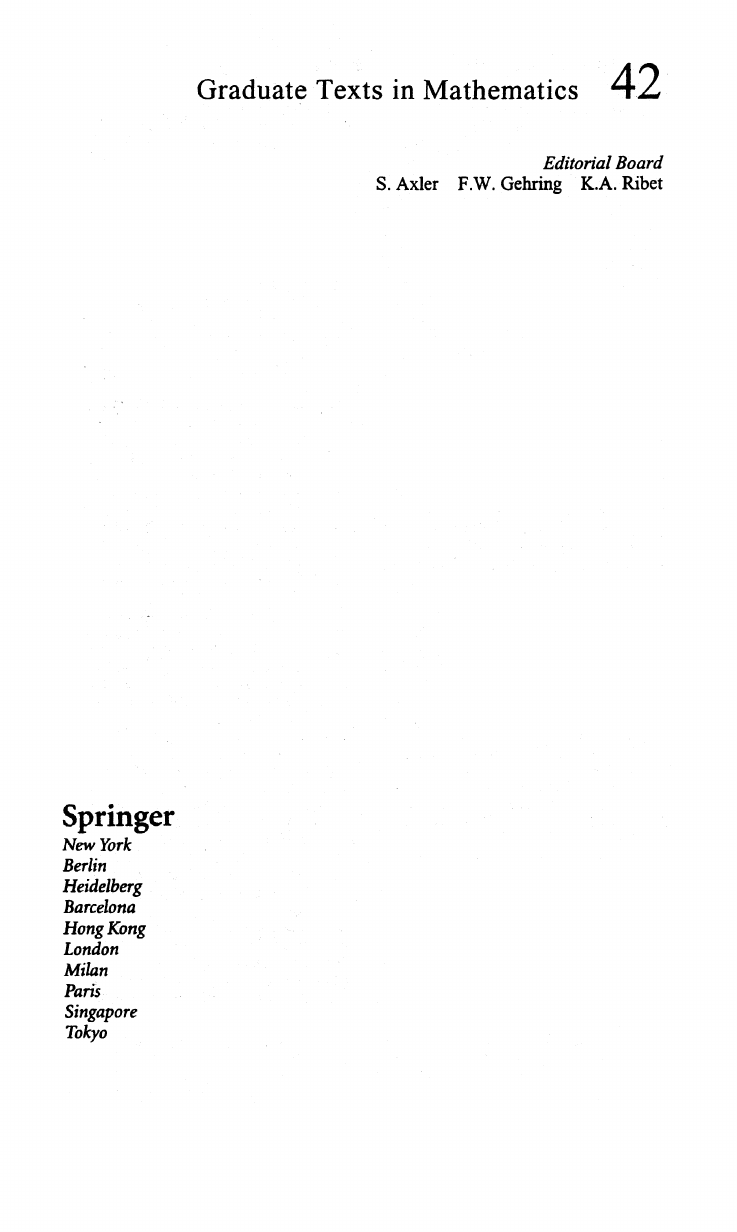
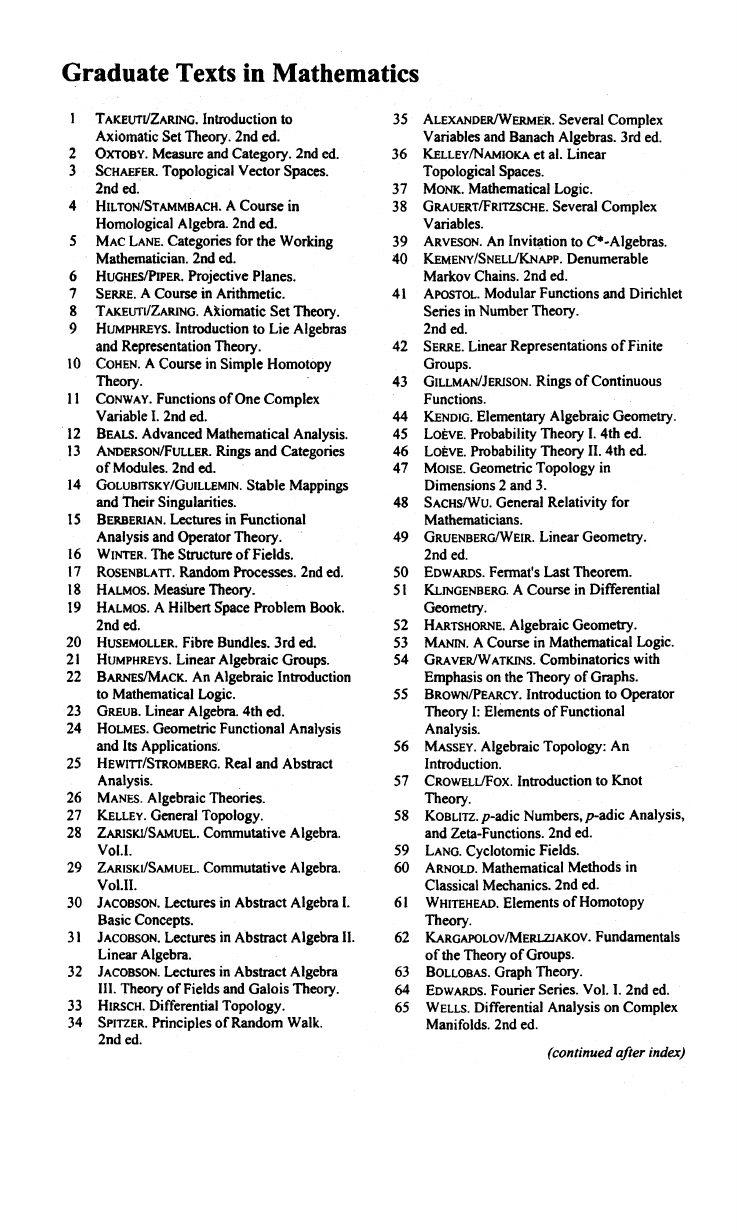
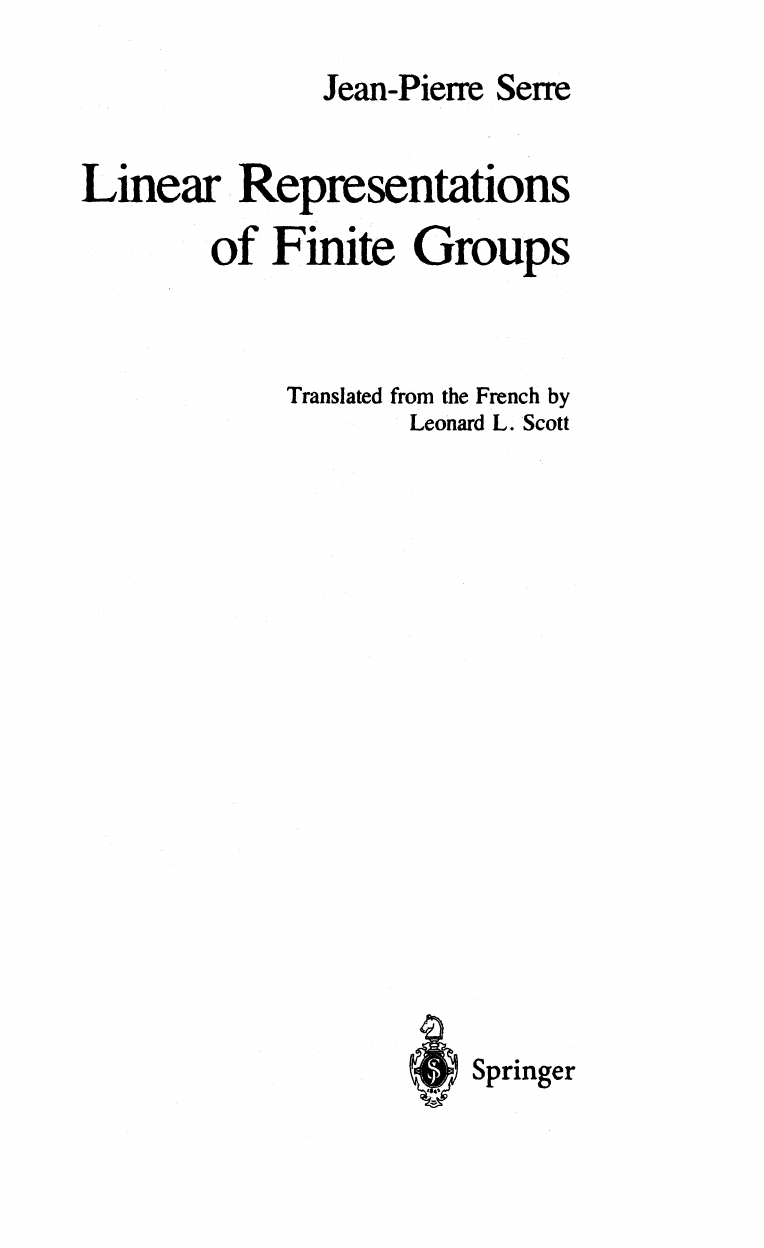
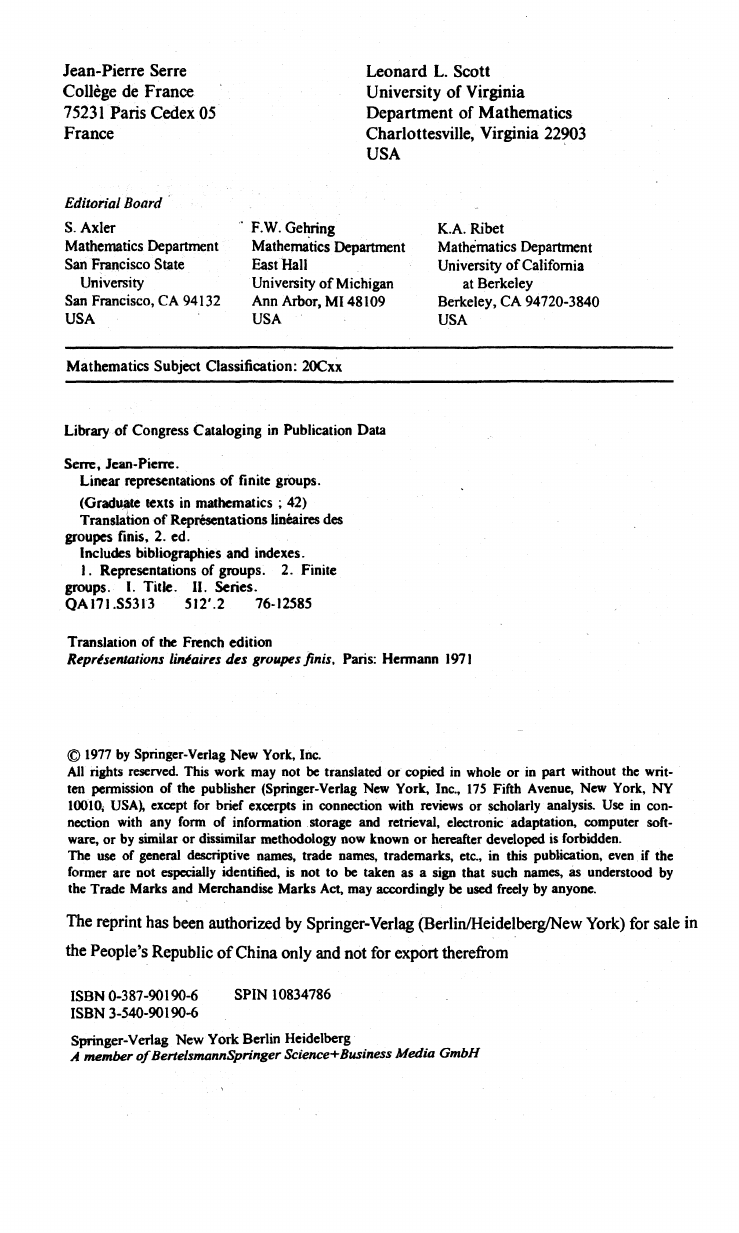
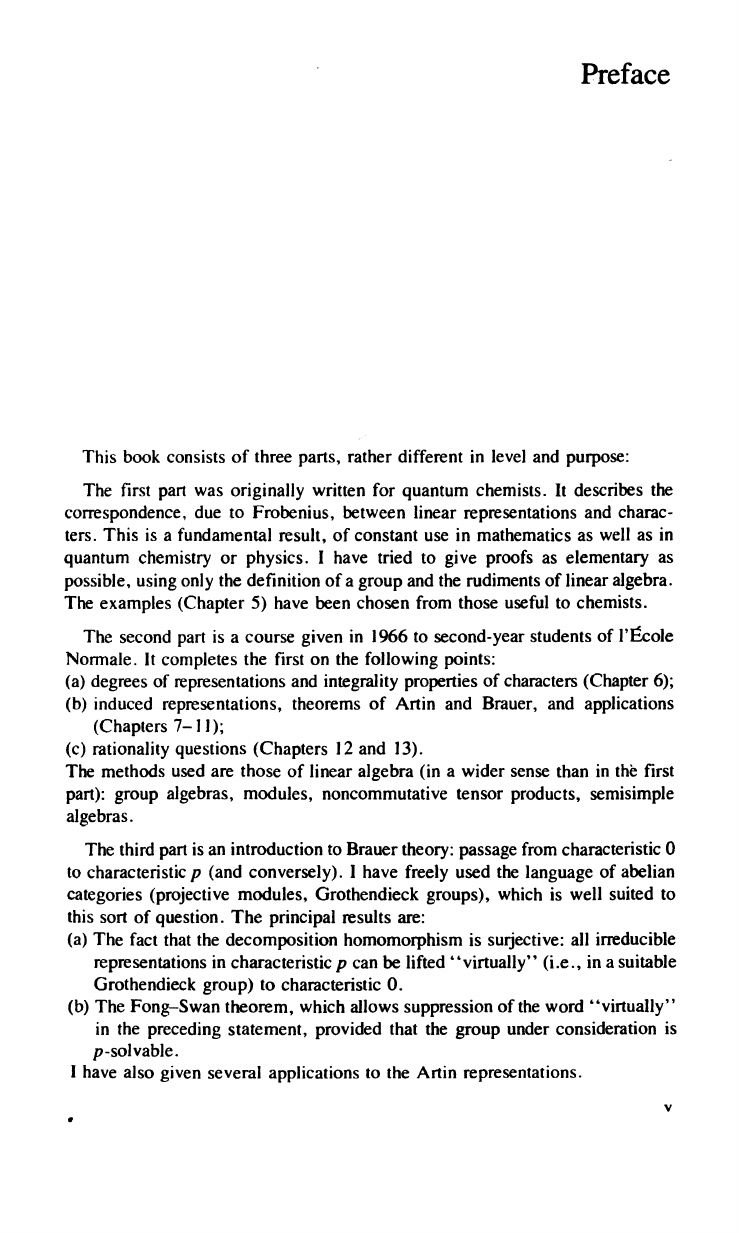
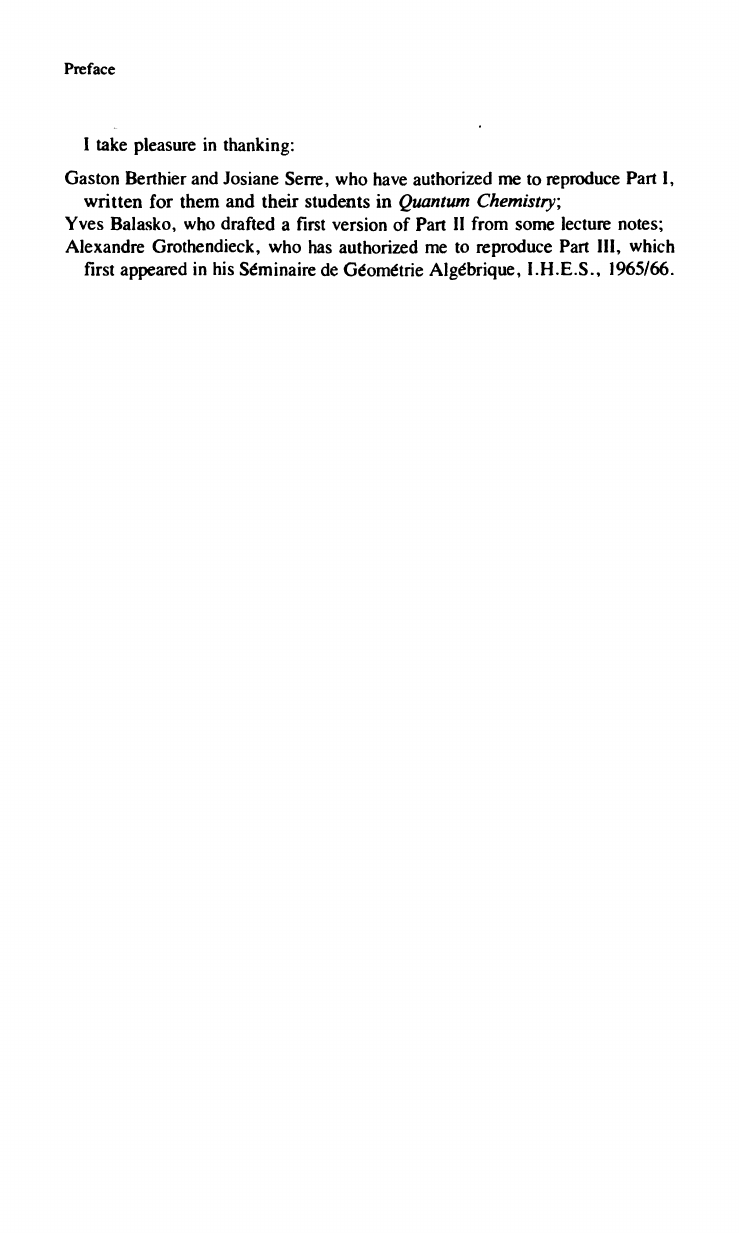
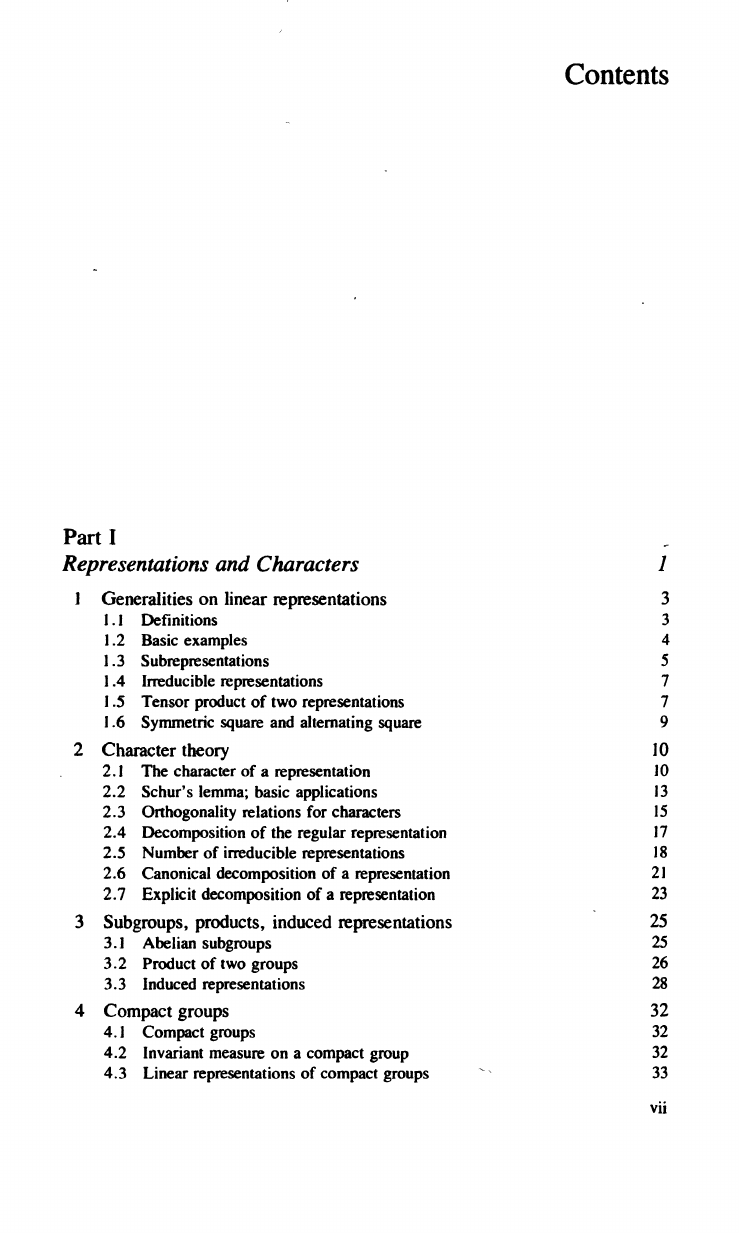
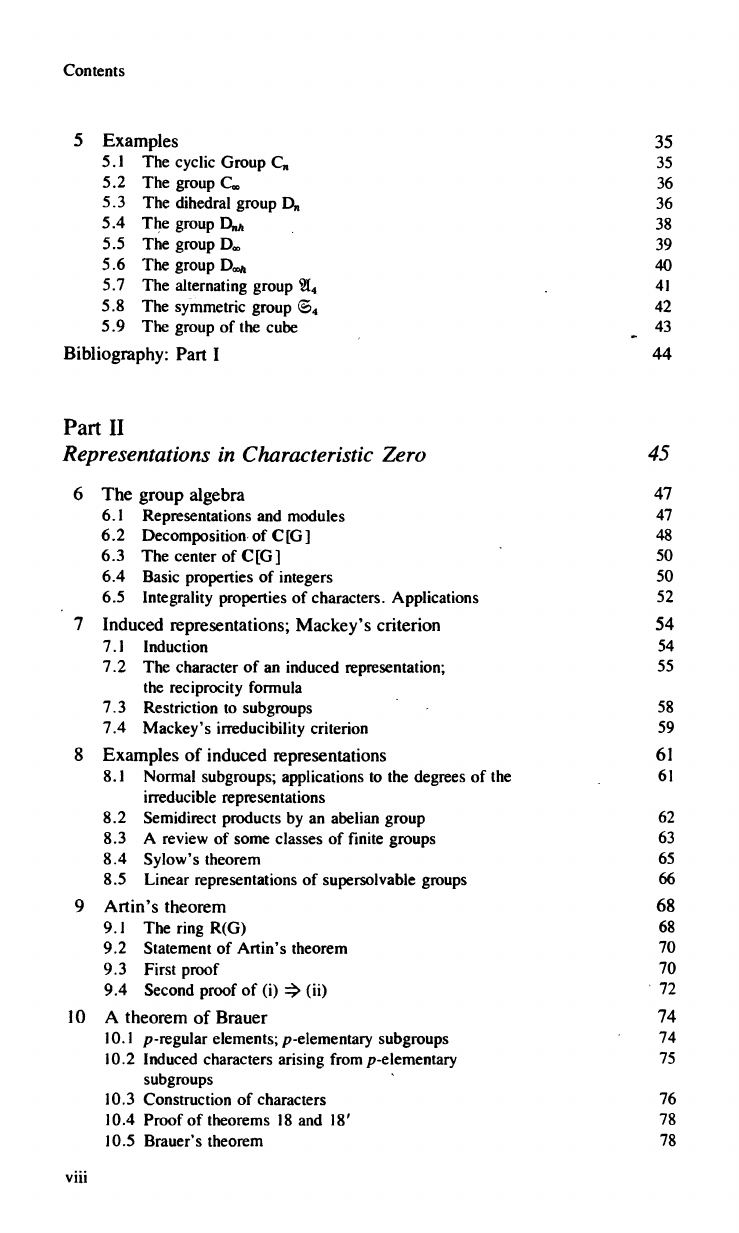








 2023年江西萍乡中考道德与法治真题及答案.doc
2023年江西萍乡中考道德与法治真题及答案.doc 2012年重庆南川中考生物真题及答案.doc
2012年重庆南川中考生物真题及答案.doc 2013年江西师范大学地理学综合及文艺理论基础考研真题.doc
2013年江西师范大学地理学综合及文艺理论基础考研真题.doc 2020年四川甘孜小升初语文真题及答案I卷.doc
2020年四川甘孜小升初语文真题及答案I卷.doc 2020年注册岩土工程师专业基础考试真题及答案.doc
2020年注册岩土工程师专业基础考试真题及答案.doc 2023-2024学年福建省厦门市九年级上学期数学月考试题及答案.doc
2023-2024学年福建省厦门市九年级上学期数学月考试题及答案.doc 2021-2022学年辽宁省沈阳市大东区九年级上学期语文期末试题及答案.doc
2021-2022学年辽宁省沈阳市大东区九年级上学期语文期末试题及答案.doc 2022-2023学年北京东城区初三第一学期物理期末试卷及答案.doc
2022-2023学年北京东城区初三第一学期物理期末试卷及答案.doc 2018上半年江西教师资格初中地理学科知识与教学能力真题及答案.doc
2018上半年江西教师资格初中地理学科知识与教学能力真题及答案.doc 2012年河北国家公务员申论考试真题及答案-省级.doc
2012年河北国家公务员申论考试真题及答案-省级.doc 2020-2021学年江苏省扬州市江都区邵樊片九年级上学期数学第一次质量检测试题及答案.doc
2020-2021学年江苏省扬州市江都区邵樊片九年级上学期数学第一次质量检测试题及答案.doc 2022下半年黑龙江教师资格证中学综合素质真题及答案.doc
2022下半年黑龙江教师资格证中学综合素质真题及答案.doc